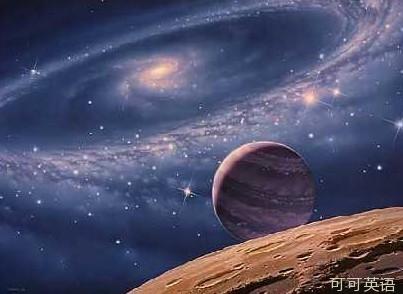It was just a tiny galaxy, minding its own business shortly after the big bang. But a chance alignment has brought this ancient galaxy into view. It just might be the most distant object that astronomers have ever seen.
銀河原本很渺小,大爆炸后便開始迅速擴張。當這個古老的星系與背景星系排成一線時,銀河便清晰可見了。它也許是天文學家觀測到的最遠的天體。

A new study using the Hubble and Spitzer space telescopes has tentatively identified the galaxy, so far away that its light has traveled for 13.3 billion years to reach us.
一項新的研究利用哈勃望遠鏡個和斯皮策太空望遠鏡來觀測,初步確認了銀河,它是如此遙遠,以至于它發出的光要經過133億年才能到達地球。
The galaxy itself is no shining cosmic beacon. In fact it's only about one one-hundredth the size of the Milky Way. So how did the scopes see it? Chalk it up to a cosmic conjunction.
銀河本身就像一個不發光的宇宙燈塔。實際上它只有銀河系的百分之一。那么如何用望眼鏡看見它。這要歸結為宇宙合點。
Some 5.6 billion years ago, its light passed a giant cluster of galaxies. The gravitational pull of the galaxy cluster acted like a lens. As a result, the scopes saw the tiny, distant galaxy in distorted—but greatly magnified—form. The study will appear in The Astrophysical Journal.
大約56億年前,銀河發出的光經過了一個巨大的星系團。在萬有引力的作用下,星系團就相當于晶狀體。因此,望遠鏡就看見了微小的,遙遠的銀河,雖然已經變形,但被極度放大了。這項研究發表在《天體物理學雜志》上。
In the cosmologist's preferred distance measure of redshift, which gauges how much light has been stretched in an expanding universe, the galaxy lies at a redshift of about 10.7. The previous record holder was found at about redshift 10. Literally far out.
宇宙學家更傾向于紅移的距離測量,計算宇宙的膨脹來判斷光波被拉長了多少。這個星系的紅移量大約是10.7。之前的記錄大約是10。確實相距甚遠。












